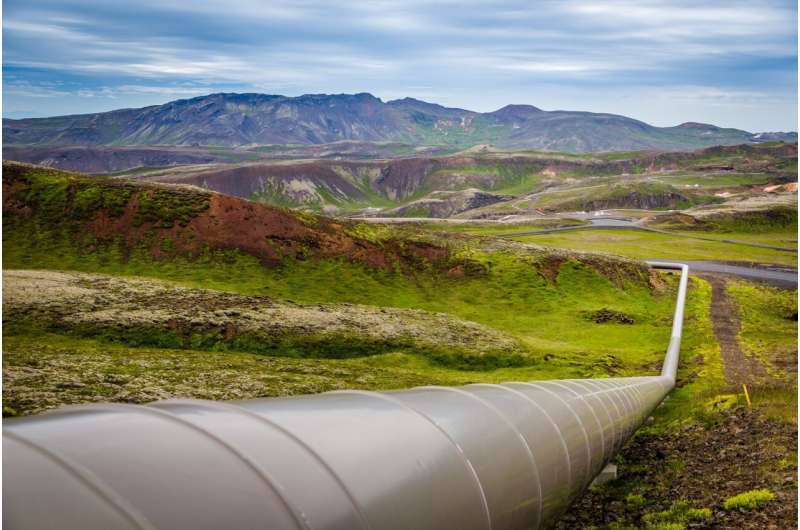This article has been reviewed according to Science X's editorial process and policies. Editors have highlighted the following attributes while ensuring the content's credibility:
fact-checked
trusted source
proofread
Carbon dioxide pipelines demystified: Balancing potentials, pitfalls for a sustainable future

A recent University of Houston white paper, titled "Carbon Dioxide Pipelines: Role in Responding to Carbon Emissions," spotlights the indispensable role of carbon dioxide pipelines in advancing carbon capture, utilization and storage (CCUS) systems worldwide. The paper delves into the economic and logistical advantages that pipelines offer in the transportation of carbon dioxide, emphasizing their crucial perspective in the global effort to address carbon emissions and help achieve a net-zero future.
In addition to highlighting the environmental benefits, the whitepaper recognizes the vital role communities play in the CCUS scenario, especially in terms of obtaining agreements from landowners to facilitate pipeline construction. The U.S., a global leader in carbon management and commercial deployment of CCUS, has an extensive carbon dioxide pipeline network spanning 5,385 miles with a capacity to transport 80 million tons of carbon dioxide annually. However, this network must be expanded to achieve the full potential of CCUS.
"Construction and operation of a carbon dioxide pipeline impacts communities in both positive and negative ways," said Paul Doucette, the Hydrogen Program officer in the Division of Energy and Innovation at UH. "Economic benefits and workforce opportunities flow to the community, but both construction of the pipelines and their operation also expose the community to risks and inconvenience. It is essential that communities have an opportunity to engage on both and that requires open and transparent collaboration and communications between contractors, operators and the community."
The major community concerns identified by the paper, authored by Doucette and Mohan Vedala, a research assistant with UH Energy, are pipeline efficiency and safety, potential repercussions for farmers and the health and well-being of community members. These concerns, the authors point out, are compounded by real-world incidents, such as the incident in Satartia, Mississippi—used as a case study in the white paper—where a pipeline failure resulted in a carbon dioxide leak prompting the evacuation of 200 residents and 45 people needing medical attention.
The paper analyzes the challenges and opportunities in growing the U.S. network of carbon dioxide pipelines, offers pipeline owners a list of best practices and helps communities get a clear understanding of carbon dioxide pipeline-related issues, enabling informed decision-making about their local impact. Emphasizing community engagement, it advocates transparent communication among the operator, community members and permitting agencies. The document also underscores the distinct challenges encountered by underserved and underrepresented communities in this context.
"We need to strike a balance between protecting the community, the environment and continued economic development through decarbonizing our energy system," Doucette said. "This will require a commitment to safety, compliance and proactive dialogue with stakeholders."
This paper, along with the earlier CCUS infrastructure white paper, provides a neutral assessment and recommendations, offering valuable insights into the construction, operation and broader implications of carbon dioxide pipelines.
"We are at a pivotal juncture in our global efforts to address climate change, and CCUS is a linchpin in this endeavor," said Ramanan Krishnamoorti, vice president for energy and innovation at the University of Houston. "These two whitepapers serve as comprehensive guides, explaining the crucial role of these pipelines and other infrastructure in successful CCUS deployment, detailing best practices, and contributing to the broader journey toward a sustainable world."
Provided by University of Houston





















